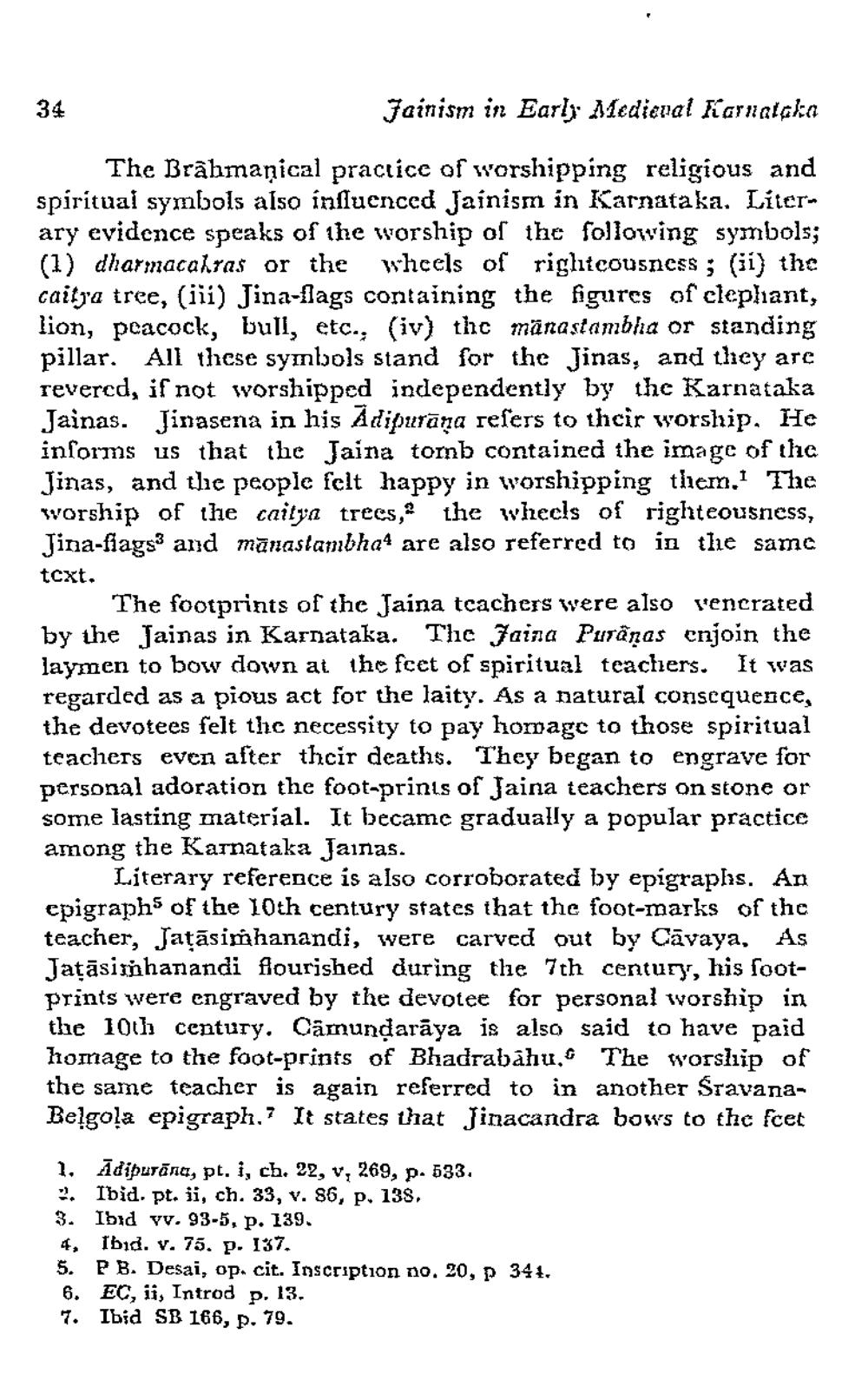________________
34
Jainism in Early Medieval líarnataka
The Brahmanical practice of worshipping religious and spiritual symbols also influenced Jainism in Karnataka. Literary evidence speaks of the worship of the following symbols; (1) dharmacalras or the wheels of rightcousness; (ii) the caitra tree, (ii) Jina-flags containing the figures of clephant, lion, peacock, bull, etc., (iv) thc manastambha or standing pillar. All these symbols stand for the Jinas, and they are revered, if not worshipped independently by the Karnataka Jainas. Jinasena in his Adipurāna refers to thcir worship. He insorms us that the Jaina tomb contained the image of the Jinas, and the people felt happy in worshipping them. The worship of the caitya trecs, the wheels of righteousness, Jina-fiags and mūnastambha4 are also referred to in the same text.
The footprints of the Jaina teachers were also vencrated by the Jainas in Karnataka. The Faina Puranas enjoin the laymen to bow down at the feet of spiritual teachers. It was regarded as a pious act for the laity. As a natural conscquence, the devotees felt the necessity to pay homage to those spiritual teachers even after their deaths. They began to engrave for personal adoration the footprints of Jaina teachers on stone or some lasting material. It became gradually a popular practice among the Karnataka Jainas.
Literary reference is also corroborated by epigraphs. An epigraphs of the 10th century states that the foot-marks of the teacher, Jațāsimhanandi, were carved out by Cāvaya, As Jațāsimhanandi flourished during the 7th century, his footprints were engraved by the devotee for personal worship in the 10th century. Câmundarāya is also said to have paid homage to the foot-prints of Bhadrabahu.. The worship of the same teacher is again referred to in another SravanaBelgola epigraph.? It states that jinacandra bows to the fcet
1. Ādipurāna, pt. i, ch. 22, v, 269, p. 533. 2. Ibid. pt. ii, ch. 33, v. 86, p. 138. 3. Ibid vv. 93-5, p. 139. 4, Ibid. v. 75. p. 137. 5. PB. Desai, op. cit. Inscription no. 20, p 341. 6. EC, ii, Introd p. 13. 7. Ibid SB 166, p. 79.




